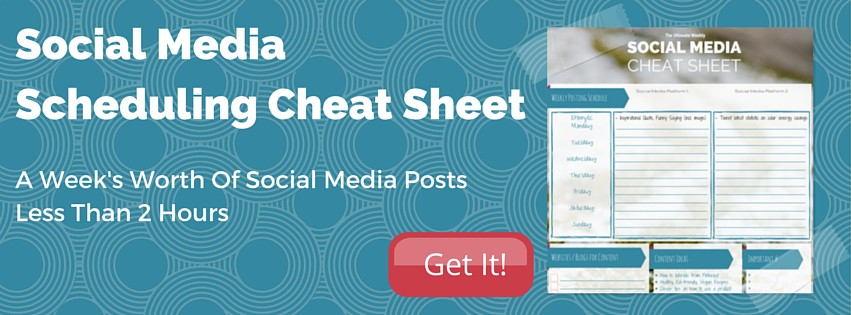Tech Marketer: What You Should Ask Yourself About Your Social Media
According to CMI’s Technology Content Marketing 2019 report, 85% of tech content marketers use social media as part of their marketing strategy. This percentage will only continue to grow.
Tech buyers are hyper-sophisticated and social media collaboration is increasing. With social media, tech marketers build relationships and thought leadership, attract and engage with target audiences, as well as delight and educate by sharing stories. These actions can lead to conversions, but more importantly, can create a more human sense of collaborative engagement necessary for today’s savvy tech buyer.
Therefore, it is healthy to take a look periodically at your company’s approach to social media to ensure your company’s message is getting out effectively and is still engaging the right people.
To help you do that, we collated eleven important questions you should ask yourself. So, let’s dive right in:
- What is your main social media goal and how do you define success for that goal? Different goals can mean different metrics. Are you looking for more engagement or more reach? A set amount of traffic or leads per month? Thought leadership on one particular topic? Setting attainable goals and deciding which metric to focus on is step number one. But don’t make the rookie mistake of getting hung up on the number of followers you gained on Twitter last week. You are better off having a solid, engaged tribe of 100 than having 10,000 fake followers who don’t even retweet once in a while.
- According to IDG, 84% of C-level and VP-level buyers use social media (primarily LinkedIn and Twitter) to influence purchasing decisions. Insight from peers on social media frequently influences purchasing decisions on products at the buyer’s final stages. What channels do you use to attract these buyers?
- LinkedIn Enlightened Tech Buyer Report states that greater than half of tomorrow’s technology purchasing committees will be younger than 36. These hyper-informed buyers are increasingly making decisions by collaborating. They are on numerous channels online with peers to make buying decisions on business technology. In addition to C-level buyers or IT departments, do your chosen channels reach these people who shape a company’s technology investments?
- It is important to grow engagement with industry top channels and thought leaders. In the case of B2B technology companies, you might want to engage with key journalists or larger ecosystem players like Microsoft, Red Hat, and others. If you are a Microsoft Partner, how can you nurture engagement with the partner team or important product managers? Whom would you engage with and how would you start that engagement?
- Establishing a pattern of sharing educational, curated, and promotional content is a good foundation for any strategy. But be sure that you 1) are talking to the right person (your buyer persona) and 2) reflect all stages of the buyer’s journey in your social media posts. Most companies make the mistake of only addressing prospects that are ready to buy by offering trials, demos, and consultations, but ignore the other 90% who have yet to make up their mind. Does your social media strategy center around 2-3 primary buyer personas? Does it cover their entire buyer’s journey?
- Knowing who you talk to determines your tone on social media. For example, if your audience is very professional and correct, helpful advice and hashtags like #ITSupport are better than snarky ones like #lmgtfy (let me google that for you). However, fun, snarky, and light-hearted hashtags can have their places as well. What tonality should your social media posts have?
- Creating original content geared toward your buyer persona can increase ROI. Making it visual is even better. About 51% of B2B marketers prioritize creating visual assets as part of their content marketing strategy. How can you best visually communicate your content?
- Video continues to climb in data, click-through, and conversion rates. According to Hubspot’s State of Inbound 2018 Report, 45% more marketers will add YouTube videos to their distribution channels in the next year. LinkedIn will gain 43% with 5% more to Slack. How can you create engaging videos?
- LinkedIn Groups is a fantastic tool for every industry as a place to connect. It contains a trove of content for solutions and best practices. Which LinkedIn Groups does your company fit best? Do you have a strategy for growing engagement on this channel?
- Client retention is key. According to CMI’s Technology Content Marketing 2019 report, 82% of technology marketers create content to build customer loyalty. Can you better engage with your existing customers on social media?
- Who are your marketing competitors? Find inspiration in how they present campaigns on their social channels. What can you learn from their social media strategy and engagement?
I know these are difficult questions to answer — if you take them seriously and answer them honestly. But without considering them, you are just creating more noise and the last thing LinkedIn, Twitter, Facebook, and other social media channels need is more noise!
On the upside, there are so many ways for B2B marketers to engage with current and potential customers. By asking these questions, a company can study and adjust these areas on social media, which helps to deliver excellent customer experience.
One last tip: Summarize all your findings in a formal social media strategy document as formalizing and documenting them makes it significantly more likely that you and the entire marketing team will stick to the strategy! A document also makes it easier to train new employees.
Share this
You May Also Like
These Related Stories

What Is Assignment Selling & How Can Your Get Started Today?

Top B2B Content Marketing Challenge: Creating Content For The Entire Buyer's Journey

.png?width=250&height=125&name=TrustBuilderLogoWhiteTranspBackgr(250x125%20px).png)


No Comments Yet
Let us know what you think